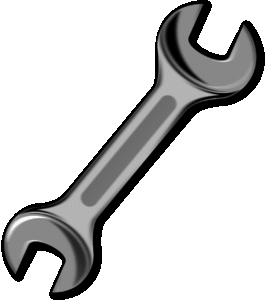
In a first Alexander Technique lesson people are often surprised when they experience movement as being smoother and much less effort than usual. They are also usually a bit surprised at experiencing a different state of being. So, with guidance from an Alexander teacher they may find, for example, that standing up or walking seems completely effortless, and by the end of the lesson they may feel both calmer and somehow lighter.
Having had these pleasurable and intriguing experiences, of course people then want to replicate these feelings after the lesson. Sometimes this can lead to understandable frustration or confusion as they try to do something to recreate the feeling, or to mimic the same apparent ‘choreography’ of the movement that they experienced in the lesson – but somehow that’s not it.
The thing is that we inevitably bring our usual ways of learning with us when we go for our first Alexander lesson – how could it be otherwise? We are socially conditioned to always try hard and strive to ‘do it right’. If something isn’t working, whether it’s related to our health or performance, we usually feel that it is our own individual responsibility to fix it – and that often means working even harder to try and tackle whatever the particular problem is. Then, if we encounter something that, despite our best efforts, we seem unable to fix we may resort to seeing some professional who might be able to fix it for us.
So, our whole culture is focused on working hard and learning ‘how to do things correctly’, accompanied by an unerring belief in the necessity of ‘getting things right’. And, when something goes wrong, we always search for what we need to do to put it right (or get someone else to try and do it for us).
But what if this viewpoint is fundamentally flawed?
Gradually through Alexander lessons, people realise that they don’t need to strive to do things ‘correctly’. Indeed, that’s generally not at all helpful. Instead, they discover that the more they are able to reduce this belief, and the more they can focus on the here and now, with clear intention but without the trying, the more they find that things tend to work out well. How does this happen?
Perhaps a starting point is to realise why we’ve ‘gone wrong’ in the first place? In earlier posts I’ve talked about the ways in which we have subconsciously adapted ourselves to a world that we didn’t evolve for. Most of the problems we experience are not our fault but our culture would tell us otherwise. ‘Poor posture? – Well, that’s clearly because you’re too lazy to hold yourself up straight!’, ‘Stressed – You should do more to reduce your stress!‘; ‘Bad back? – Oh that’s because you spend too much time sitting and not enough exercising!’ etc. These are the deeply unhelpful implicit (or sometimes explicit) messages that we are constantly bombarded with.
Yet we all have an inbuilt capacity for well-coordinated movement and balance, as well as inherent potential for effective self-regulation of our emotional state. Even if we are born with challenging genetic or social circumstances, there is more potential there than our society usually allows us.
In fact, faced with any challenge, what is likely to be the most helpful way forwards is to ‘unlearn’ our usual approach, because this will be enmeshed with our habits – whether these are habitual ways of moving or subconscious preconceptions and beliefs that are effectively holding us back.
The Alexander Technique takes a radically different approach to life’s challenges. Through it we unlearn habitual ways of acting, being and thinking, and discover how to be able to respond to life in ways that are more productive and enjoyable. Rather than ‘trying our best to do something right’, we use our intention, attention and awareness to be clear what it is that we want and to stop doing whatever is getting in the way (usually our habits). This takes quite a mindshift for most people and it’s why the Alexander Technique has been described as ‘simple but not easy’.